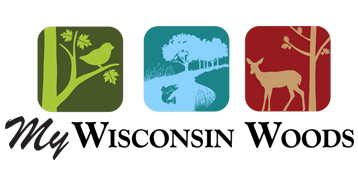Young Forest
Basically, it’s young trees and shrubs growing together thickly. Young forest can be an old field coming up in saplings like popple and white birch, a wetland thick with tag alder and other shrubs, or trees springing back up on a wooded tract following a timber harvest.
Generally, about 10 to 20 years. After that, it becomes older forest. Having forest with a mixture of different-aged patches (young, middle-aged, and old) benefits the widest variety of wildlife. We recommend creating new areas of young forest every 5 to 20 years, depending on the size of your forest property.
Depending on the site, even-age timber harvesting can be a cost-effective way to make young forest. Timber harvests give us a way to mimic natural disturbance by opening the leaf canopy, removing mature trees and disturbing the soil. When managed properly, a timber harvest can enhance forests to benefit human and wildlife populations. Conservationists and landowners may also plant native shrubs for food and cover, and mimic natural events like wildfires and windstorms by using controlled burning and heavy-duty machines to knock back older growth and stimulate the dense regrowth of trees and shrubs.
It is important for a landowner/manager to know what kind of soils, topography, and conditions exist on their land, and which kind of forest management is best applied in those circumstances. In Northern Wisconsin, many locations are well suited for hardwoods or pine and should be managed for those species. Other areas could be effectively managed for young forest; some are already dominated with aspen or alder and just need some well-planned management to improve them.
Grasses and flowers grow, providing quality nesting cover and a variety of seeds and insects valuable for foraging wildlife. Shrubs move in, producing more valuable food for wildlife such as berries and nuts.
Many wildlife species benefit from a landscape that contains forests of different ages and compositions. If your woods are all one age and have clear visibility with little plant growth beneath a closed leaf canopy, your woods may not be getting used by a broad spectrum of wildlife. Adding well-planned timber harvests and young forest in appropriate sizes and locations adds openings, food, and cover that will in turn attract a great variety of wildlife.
Many wildlife species benefit from a landscape that contains forests of different ages and compositions. If your woods are all one age and have clear visibility with little plant growth beneath a closed leaf canopy, your woods may not be getting used by a broad spectrum of wildlife. Adding well-planned timber harvests and young forest in appropriate sizes and locations adds openings, food, and cover that will in turn attract a great variety of wildlife.
